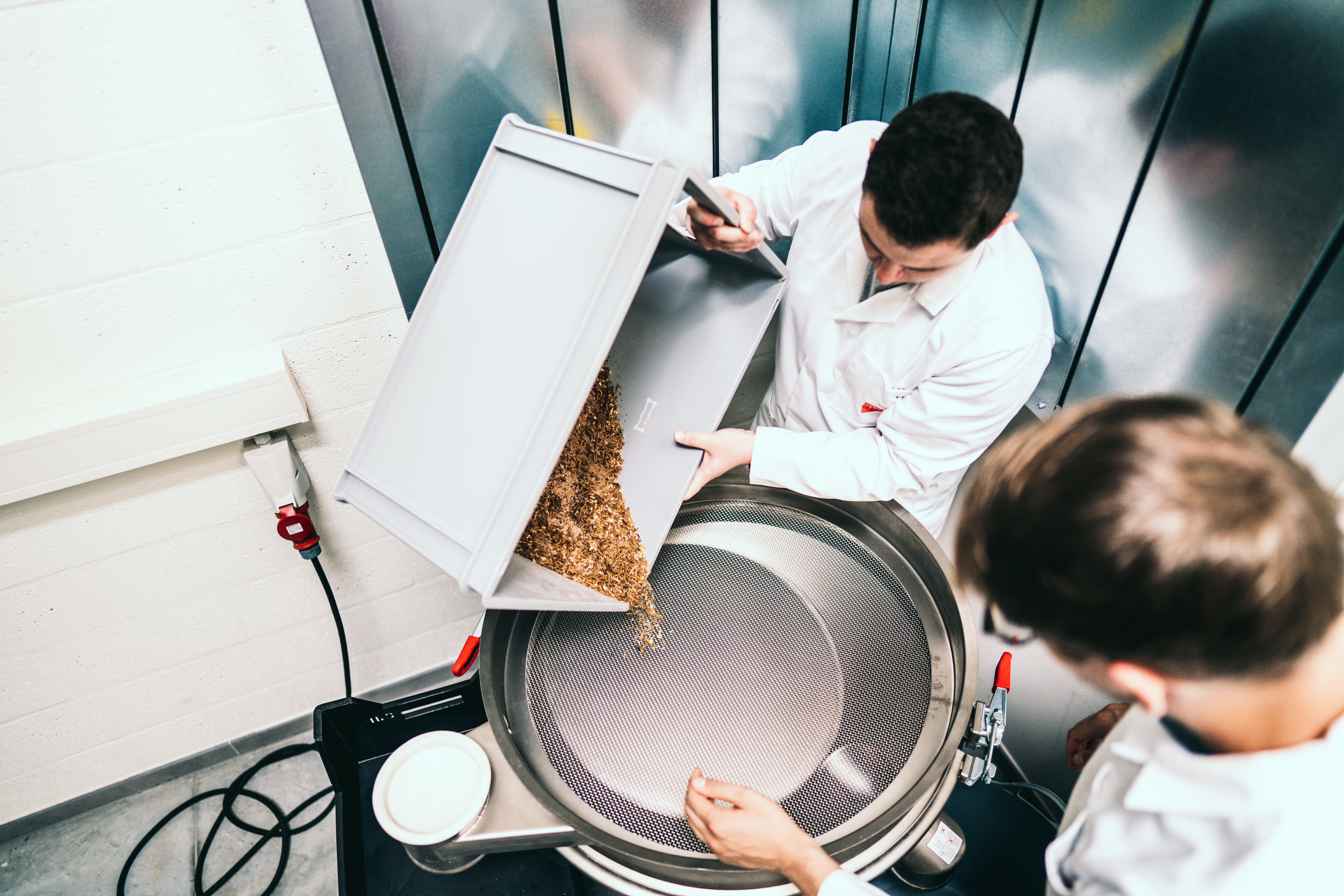Students and researchers from Thomas More are putting worms on your plate.
“By 2030, our sports nutrition will be made with insects.”
Nice and thick. Juicy on the inside. Perfectly grilled. Encased in a crunchy bun. Nothing about this burger would suggest that it consists of 30% mealworms. The Nutrition and Dietetics students at Campus Geel call their creation the ‘molitor burger', named after the Latin name of the creature. They hope to score with this on their bachelor thesis, but also in the local market. Researcher Meggie Van Peer believes in their success, although that may take some time.
Admittedly, mealworms, crickets, grasshoppers or flies aren't exactly cuddly creatures. Nor do they look edible. "Yet they are revolutionary for the food industry," says Meggie Van Peer. She is a researcher at the Centre of Expertise for Sustainable Biomass and Chemistry (RADIUS) and specialises in breeding various insect species. Her office is not coincidentally located at Campus Geel. This is also where Thomas More's insect campus is situated. A unique place where entrepreneurs and farmers learn to breed and process insects. Lotte, Salka, and Jinthe also study in Geel. They are in their final year of Nutrition and Dietetics. For their bachelor thesis, they developed a mealworm burger at the request of pig farmers from the Kempen region. They wanted to know how much percent of minced meat could be replaced by insects in a burger, since they themselves have just started breeding them. "I once ate a mealworm cookie myself. This was mainly to show that I dare to eat it. Or cricket powder on a pizza. Delicious! But preparing something with insects or conducting experiments on them in a lab was the first time. And besides, it was incredibly interesting," the students enthusiastically recount. The outcome of the tests: 30% mealworm paste to 70% minced pork turned out to be the best ratio.
(Read more below the photos)
Secret ingredient
And then, put on the apron, experiment and knead really hard. With the help of a butcher and a professional meat press, the students come up with a recipe that resembles the classic burger. Their secret ingredient? "Undoubtedly the mealworms," they laugh. "And also lots of breadcrumbs and classic spices, because the mealworm paste doesn't have a distinct taste." Their biggest challenge was finding the right texture. "The taste was pretty good fairly quickly, but it was too grainy. A good burger should be juicy and firm."
10 out of 10
The students have meanwhile subjected the burger to sensory research. What turns out is that many guinea pigs thought the insect burger was the classic one. "A cleaning lady who almost gagged when she arrived said after the tasting: 'wow, 10 out of 10 for taste. It's really delicious'. Our mission is successful if we can provide the farmers with an answer and break the taboo of 'oh, that's gross'. And yes, it would be nice if you could soon find the molitor burger in the supermarket or why not, at Rock Werchter. Because it's healthier. Because it's more sustainable. Because it supports local farmers." Researcher Meggie adds, "What the students are doing is invaluable. Instead of seeing insects as a delicacy, as it was the case a few years ago, we just need to make delicious dishes with them. Actually, it's also a matter of educating the consumer. There's still work to be done when it comes to the perception. So, it's important that a market emerges, like the collaboration of our students with local farmers. There's so much potential!"
Sustainable
While the meat industry receives negative attention due to climate consequences, insects are gaining popularity thanks to their sustainable source of proteins. Meggie: "Mealworms can be bred on residual streams, such as by-products of vegetables, but also on wheat flours. The auction has massive amounts of surplus. Bread is also a major waste stream. So, we put them in a chopper. The perfect substrate for mealworms. This way, you can convert by-products into high-quality nutrients. That's impressive." It takes about 8 to 10 weeks to get a mature mealworm. The feed conversion ratio is comparable to that of a chicken. But mealworms can be stacked. Chickens can't. So, the space is also more limited. Another advantage: they are not warm-blooded and therefore do not need energy to keep their bodies warm. However, Meggie emphasises the embryonic nature of the new agricultural activity: "We have centuries-old experience with pigs and cows. We still need to optimise the insect industry."
(Read more below the photos)
Sport Food
"Our burgers are not only more sustainable. They're also healthier," say the Nutrition and Dietetics students. "Minced pork contains a lot of saturated fat. This raises your bad cholesterol. Mealworms, on the other hand, have much more unsaturated healthy fat, lots of fibre and are rich in proteins." Researcher Meggie emphasises that these high-quality proteins are ideal for individuals doing sports. "Even though I see the insect sector stagnating after 6 years, I predict that by 2030 we will find insects in sports nutrition and also to a large extent in pet food." If you can't wait: RADIUS has developed the website www.valusect.eu, where you can even find the recipe for chocolate cake with insects. And hopefully soon the recipe for the molitor burger as well. Ideal for a BBQ with a cold beer. Enjoy your meal!
🌾🍜 Discover our English bachelor's degrees.



.jpeg)

.jpeg)
